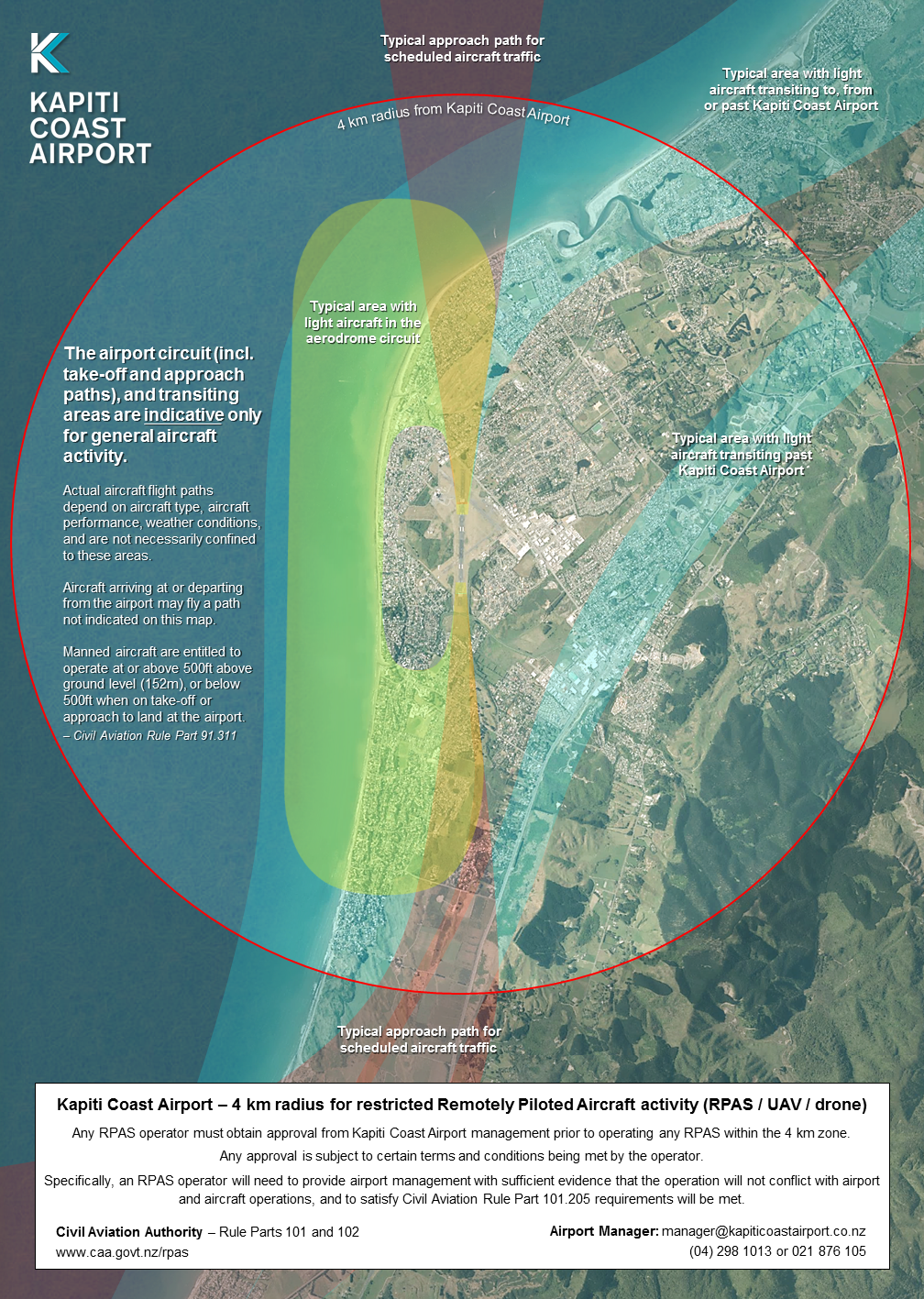IMPORTANT INFORMATION below for operating a remotely piloted aircraft within 4km of Kapiti Coast Airport.
How to Submit a Drone (RPAS) Request to the Airport Manager
To request agreement for a drone flight within 4kms of Paraparaumu Aerodrome as required by Civil Aviation Rule Part 101, send an email to drones@airportmanagement.co.nz at least 1 business day in advance.
In the subject line include: Drone Request - Address - Date - Time window.
The email must contain the following -
Your Name:
Your Observer’s Name:
Contact Phone:
Confirmation you have a current qualifying CAA recognised qualification to fly a drone within 4km of an aerodrome. (See here for a list of approved qualifications: https://aviation.govt.nz/drones/training/ )
Address:
Google maps link:
Date:
Time window:
Max height required:
Radius of operation:
After submitting your request, a response can be expected within 24 hours, and may contain additional restrictions on your flight. It is the pilots responsibility to ensure they operate within any restrictions imposed by the airport.
Approval considerations
All flights are to be carried out in accordance with Civil Aviation Rule part 101, this includes maximum height of flight and any shielded operation unless specific agreement has been reached between the pilot and airport manager.
The aerial map below shows exactly how far reaching the 4km zone is. This map is only indicative of the typical flight paths of the aerodrome circuit and does not include flight paths of helicopters (that come in from any angle), and itinerant traffic that are transiting past the airport (generally along SH1 or along the coast). The high concern areas are the take-off and approach paths (particularly where it may infringe a runway’s Obstacle Limitation Surfaces) and the general aircraft circuit.
The 4km radius for restricted RPAS activity
The aerial map below shows exactly how far reaching the 4km zone is. This map is only indicative of the typical flight paths of the aerodrome circuit and does not include flight paths of helicopters (that come in from any angle), and itinerant traffic that are transiting past the airport (generally along SH1 or along the coast). Our high concern areas are the take-off and approach paths (particularly where it may infringe a runway’s Obstacle Limitation Surfaces) and the general aircraft circuit.

Click here for a larger image
Kapiti Coast Airport recommends RPAS operators visit the CAA and Airshare websites to keep up to date with the progression of RPAS rules by the CAA.
NOTE:
- Completing an airshare.co.nz flight plan DOES NOT provide an approval from an Airport Authority.
